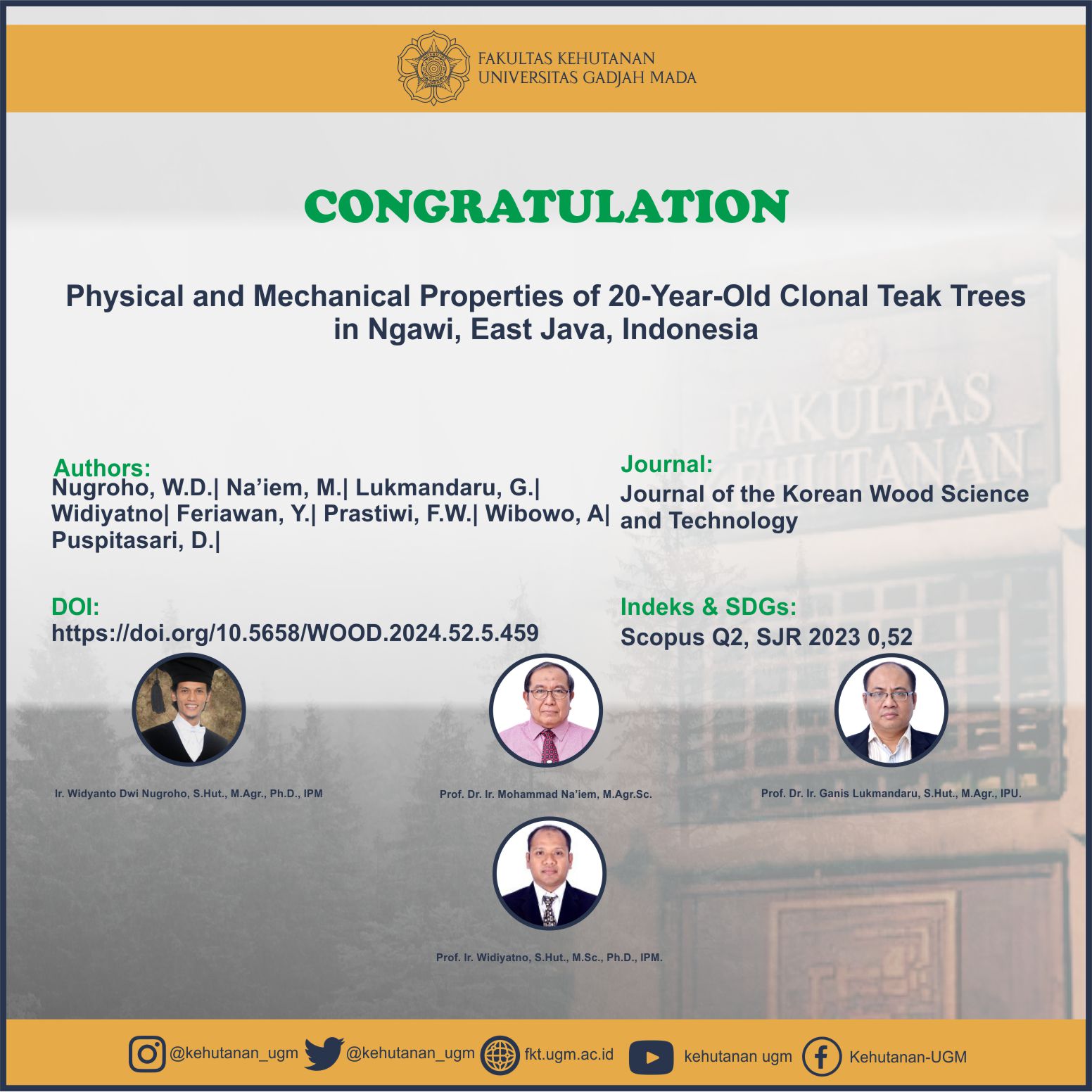
Abstract
Teak tree breeding programs have been conducted over the last several decades in various locations throughout Indonesia. These programs have produced superior teak clones with growth increments > 3 cm diameter at breast height. The wood quality of this clonal teak must be evaluated to determine the final use of these trees and the success rate of the teak breeding programs. In this study we investigated the physical condition (reflected in wood color and heartwood percentage), physical properties (moisture content, basic density, shrinkage, and tangential/radial shrinkage ratio), and mechanical properties (modulus of elasticity, modulus of rupture, compressive strength parallel and perpendicular to grain, hardness, and cleavage strength) in 20-year-old clonal teak planted in Ngawi, East Java. The parameters were measured in the axial (bottom, middle, and top) and radial (near pith, middle, and near bark) directions and according to the British Standard 373:1957. The results showed that axial variation significantly affected the wood color (L*, a*, and b*), basic density, radial shrinkage, modulus of elasticity, and compressive strength parallel to the grain. Besides, the radial variation had a significant effect on wood color (L*), basic density, modulus of elasticity, modulus of rupture, compressive strength parallel and perpendicular to the grain, hardness, and cleavage strength. Based on these results, it can be concluded that the teak breeding program has been highly successful.
SDGs:
SDG 9:Industry, Innovation and Infrastructure
SDG 12:Responsible Consumption and Production
SDG 13:Climate Action
SDG 15:Life on Land
Link Dokumen:
Download
